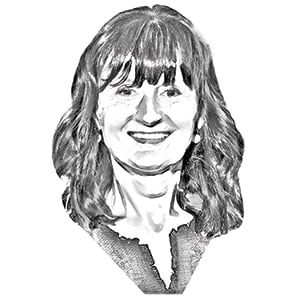The world as we know it has changed. Recent extraordinary events, from the COVID pandemic and natural disasters to supply-chain dysfunction caused by trade tensions, inflation, and war, means that – to quote Albert Einstein – “we cannot solve our problems with the same level of thinking that created them.”
In other words, we must adopt different thinking to industrial transformation to realise Australia’s full growth potential in this new world.
To do this, it is important to understand that the world operates as a system that is complex and adaptive in nature where the different parts are interdependent and interacting, collectively making up the whole.
Systems Thinking provides the context or background to the purpose or function of why we are doing something. It is then the different parts or characteristics of the system and how they feed into and/or relate to each other that determine the way forward or strategy.
Without the context, the strategy is rudderless.

So how do we test the purpose and solution to ensure it meets the needs of the user or customer or market?
The Design Led Thinking approach, an iterative process, helps to understand the users, challenges assumptions, redefines problems and creates innovative solutions for prototyping and testing.
Too often we create strategies without the end user front of mind, leading to wrong problems being solved.
There is also a tendency in Australia to adopt a Place-Based approach to take advantage of the physical place and local assets to create competitive advantage.
This approach is easier for stakeholders to understand as they can see the physical infrastructure, such as a food and beverage manufacturing facility. But this type of investment is just part of the solution.
What about a People-Based approach? A focus on the human capital as a source of competitive advantage has allowed many organisations to create value as has been observed with clusters operating in Australia’s food and agribusiness sector.
FIAL’s work on clusters has shown the value of investment in people and how they lead the development of ecosystems and collaborative approaches to support regional growth.
With relationships deepening over time, and trust forming among the cohort of stakeholders, many of FIAL’s supported clusters have attracted success and large infrastructure investments.
For example, FermenTasmania was part of the bid to get Launceston designated as a UNESCO City of Gastronomy, one of only 49 around the world, including securing $7.5 million for a Fermentation Hub through the Commonwealth’s
Building Better Regions Fund.
Whilst a physical location is important as a place for stakeholders to congregate, co-design and co-create, it is the people, knowledge, and expertise that foster innovation.
A People-Based approach enables scaling of ideas from the bench to manufacturing, developing markets, and overcoming collective challenges and realising growth opportunities fundamental to building more resilient regions and manufacturing capabilities across Australia.
So, what do we call these innovation ecosystems where the activity takes place?
Is it a Centre of Excellence or Community of Practice or Network or Hub or District or Precinct or Cluster or some other name?
We know that a Centre of Excellence builds capacity in a particular field of research for realising higher education and research goals.
On the other hand, a Community of Practice is a group of people who share a common interest and come together to fulfill both individual and group goals.
A Network is an interconnection of people or things or places that exchange knowledge and ideas, while a hub is a co-working space for people, research organisations and firms.
A District or Precinct is a defined boundary or function in a geography, whereas Clusters are geographic concentrations of interconnected companies and institutions of critical competitive success in a particular field of interest.
The bottom line is we can call it what we like but it is important that we do not muddy the waters and interchange definitions or get stuck in phraseology.
We know that it is the social glue or the knowledge of people, their motivation, and the relationships they form that will create true competitive advantage in the longer term.
So what approaches are nations using to building innovation ecosystems? The US CHIPS and Science Act places strong emphasis on Place-Based policies. Their investment on clusters and communities of practices are new tools for economic development.
In Canada, they are investing in People-Based Global Innovation Clusters to boost innovation and growth in a particular industry. The UK’s Catapults, a network of world-leading technology and innovation centres, support businesses in global markets.
Whilst these nations are approaching industrial transformation from different perspectives, all are focusing on innovation ecosystems as a contemporary way of building the industries and technologies of the future.
Industrial transformation requires the right strategy for the right context including greater coordination of government policies and programs. This will ensure Australia creates products or services more desirable to customers and markets than any other country.
It is our uniqueness that will provide the competitive advantage for innovative SMEs and startups to thrive in this complex new world.
Dr Mirjana Prica is the Managing Director at Food Innovation Australia Limited (FIAL), a federally funded Industry Growth Centre established to accelerate commercially-driven collaboration in the Australian food and agribusiness industry.
Do you know more? Contact James Riley via Email.

